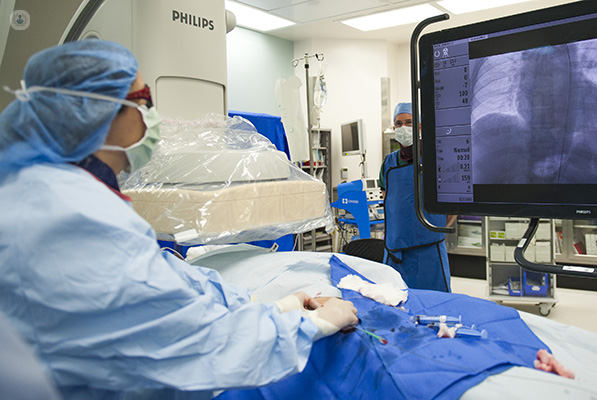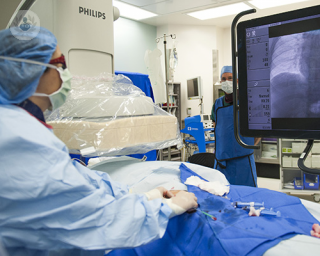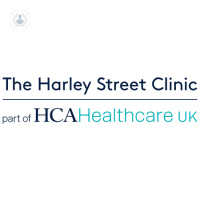Interventional cardiology
What is interventional cardiology?
Interventional cardiology is the branch of cardiology that diagnoses and treats structural heart problems using catheters inserted through blood vessels.
Use of catheters
Catheters are thin tubes that can be used to perform a number of procedures. They are typically inserted into a large peripheral artery or vein (such as the femoral artery) and are fed through the blood vessel to the heart.
They may be used to gather data on the affected tissue by injecting a contrast agent that will show up on X-rays, for example. They can also be used to perform treatment, which may involve inserting replacement valves, placing stents, or even destroying problematic tissue or blood clots.

What conditions are treated by interventional cardiology?
Interventional cardiology may be used to treat a variety of conditions affecting the heart and/or adjacent blood vessels.
- Ischemic heart disease – this may be treated with angioplasty, stent placement, and/or coronary thrombectomy.
- Valve disease – problems with heart valves may be treated with valvuloplasty, percutaneous valve repair or valve replacement.
- Congenital heart disease – there are a number of heart defects that a person can be born with, such as atrial septal defects. Interventional cardiology techniques may be used to diagnose and repair them.
What procedures are included in interventional cardiology?
- Angioplasty – a minimally invasive procedure to widen narrowed blood vessels.
- Valvuloplasty – a procedure to repair defects in the heart valves.
- Coronary angioplasty (percutaneous coronary intervention) – angioplasty to treat blockages in the coronary arteries (the arteries responsible for supplying the heart muscle itself with blood) due to coronary artery disease. The procedure may involve the use of stents or balloon catheters.
- Percutaneous valve replacement – an alternative to open heart surgery, heart valves (including the aortic, mitral, and pulmonary valves can be replaced by less invasive methods, e.g. the TAVI procedure.
- Percutaneous valve repair – minimally invasive repair of the mitral valve. Options include the MONARC and MitraClip systems.
- Coronary thrombectomy – removal of a blood clot from the coronary arteries.
What are the alternatives to this treatment?
The main alternative in many cases is open heart surgery, which is performed by a cardiothoracic surgeon. The risks are often higher in open surgery. Interventional cardiology takes a high level of training and expertise to perform.

















